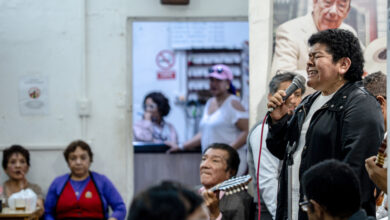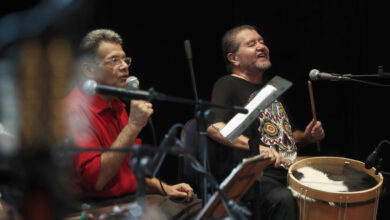This is how Vive Latino Festival 2019 was lived
Listen this article
The twentieth version of the Vive Latino Festival took place on the 16th and 17th of March at the Foro Sol in Mexico City. This is how it was lived

The Latin American Festival of Musical Culture Vive Latino gave the public its first version in 1998 with the aim of opening a Latin American rock music festival. At first, the festival sought to be purely Latin American and rocker and took great care in the curatorship he gave his audience. In recent years, however, the more commonly known as Vive Latino has opened both geographically and in gender. Year after year more international artists are invited outside the continent without losing sight of the north of the festival: Ibero-American music. Other artists have also taken their place outside the rock genre and are invited to Vive Latino by emerging artists from around the continent as well as commercial artists with massive diffusion.
Leer en español: Así se vivió el Festival Vive Latino 2019
In its twentieth version, the Vive Latino lasted two days in which the public of Mexico City could see a poster of artists very varied in terms of geographical origin and terms of musical genres.
Read also: Bad Bunny or how to do everything in the music world
The first day of Vive Latino
On Saturday, March 16, it began with the most rock bands of the festival. Viva Suecia and Kill Aniston were the bands in charge of opening the festival, one with soft rock and the other with metal. They were followed by some local and traditional Mexican rock bands like Hello Seahorse!, Jumbo, Siddartha. The audience later became excited with the pop/rock singer from the US LP, who was one of the most anticipated artists of the festival.
As the afternoon passed the concert became a little more rock to the sound of Minuscule Division, Phobia, and Editors. The first two are already recognized bands in Mexican rock and were embraced by the public. Editors, on the other hand, was part of the international quota since they were initially from the United Kingdom. After this alternative rock, festival attendees enjoyed some funny pink pop with the presentation of the band Argentina Miranda!, who was followed by nothing more and nothing less than Foals, who drove the audience crazy.
The audience could also see veterans of Mexican rock and Vive Latino: Caifanes, who recently announced their return to music and released a new single after two decades of silence. Next to them are other greats of traditional Mexican rock: Santa Sabina. The bands Bomba Estéreo and the Spaniards Ska-P also played to the sound of these bands, who gave diversity to the festival with their electronic cumbia rhythms and their nineties ska-punk.
Second day of Vive Latino
Undoubtedly the Vive Latino broke out on the day of its closure. Many of the artists who headed the poster and who were among the most anticipated were presented on the second day of the festival. Also, this second day also had the presence of traditional bands of the festival, bands that played from the Sun Forum. Among the rock bands were Los Estrambóticos, who repeated their presence in Vive Latino, Los Viejos, El gran silencio, and the TRI. These bands were, however, varied within the genre, ranging from rock mixed with cumbia to metal.
On the second day, traditional Latin rock artists such as the great Santana and Enrique Bunbury also performed. The French duo The Inspector Kluzo fulfilled the international quota. Orchestra Dámaso Pérez Pardo gave a tropical touch to the second day, and María Barracuda put the feminine touch. The German rapper gave variety to this second day in which he heard mostly pop and rock. Finally, maybe the two greatest artists were the Colombian Juanes and the great Mexican band Café Tacvba, who put to sing the assistants their successes of always.
LatinAmerican Post | Juliana Rodríguez Pabón
Translated from "Así se vivió el Festival Vive Latino 2019"




